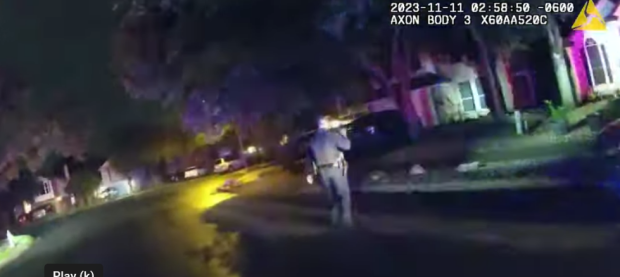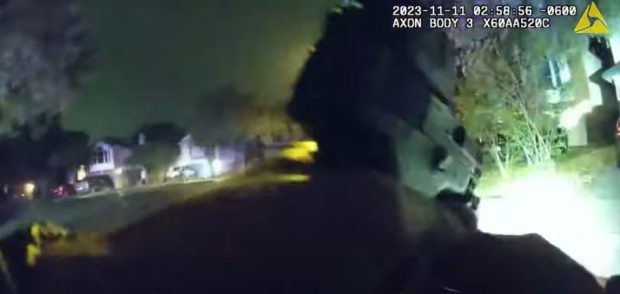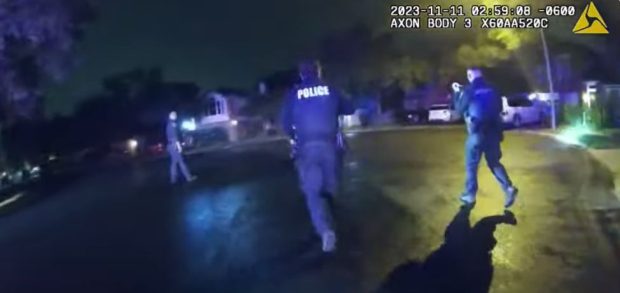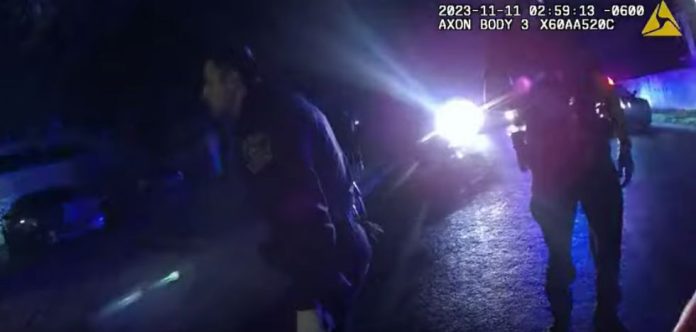Most people don’t practice integrating flashlight tactics into their self defense training nearly enough. It’s important to be able to use a flashlight correctly if you want to win a fight during the hours of darkness. Improper flashlight use can get you shot very quickly.
For both armed citizens and cops, low light shooting training is just that: SHOOTING training. The rare departments that actually conduct low light training usually just shoot a few rounds at a stationary target after some remedial instruction on flashlight shooting techniques and positions. The officers generally fire a magazine or two using their flashlights or weapon mounted lights and then promptly forget the skill set until a few years later when the “learning” cycle is repeated.
In this type of low light training, there is no stress. There are no demands placed on the student. Few departments conduct interactive force on force training in the dark. Officers need to learn to shoot in the dark, but they also need to learn how to search in the dark, handle people in the dark, handcuff suspects in the dark, and cover their partners in the dark. That training is exceedingly rare.
While shooting with a light is a critical skill to acquire, it isn’t the only important flashlight skill to have in your arsenal. Be honest with yourself. Has your “low light” training included any of the following topics?
– Signalling with the light
– Navigating with the light (both indoors and outdoors)
– Searching (for suspects, victims, or witnesses) with a light
– Utilizing a hand held flashlight and a weapon mounted light in concert with each other
– Using flash and move techniques to move in unpredictable patterns
– Utilizing indirect lighting tactics (bouncing light)
– How to avoid backlighting yourself or teammates
– How to provide low light first aid to an injured person without muzzling the person with your WML
– Using team tactics to create a blinding wall of light to allow partners to approach in the dark
– How best to utilize the light as a force multiplier (both as an impact weapon and distraction tool)
– How to mask your movements using light
These are all critical skill sets that few folks ever consider, let alone master.
Take a look at this bodycam video of police officers approaching a house responding to a call about a multiple victim stabbing inside. It’s a short video. Watch the whole thing and see if you notice any problems. We’ll discuss the issues I see when you finish watching the camera footage.
Body-worn Camera Officer Nichole Collins – November 11, 2023
There are several lessons to learn here.
1) Flashlight in gun hand. Take a look at the screenshot below from the :40 second mark in the video above.

This is a right handed officer holding his flashlight with his gun hand. What happens if he has to quickly draw his gun? He must take time to switch hands or discard the light to access his pistol. If he switches hands, he wasting valuable time in a dangerous place with no nearby cover.
If he drops the light to draw, how is he going to see to shoot? It’s best to keep your gun hand free as much as possible.
2) Searching with a handgun weapon-mounted light (WML) is a dangerous practice. When you are armed with a handgun, all your searching should be done with an independent hand-held light.
The handgun mounted light should ONLY be used for target confirmation and sight alignment but not for searching. If a threat is located with the handheld light, the officer should then present the weapon and activate the weapon mounted light to make shooting in the dark easier.
WMLs are for shooting. Handheld lights are for searching.

Officer searching for suspect utilizing her WML
In a class I took a few years ago, Massad Ayoob brought up a very useful analogy to best explain this concept.
Many of you have hunted with a rifle or taken a hunter safety education course. If you were hunting with a rifle, would you use the rifle scope to scan for game, knowing that you would be muzzling the entire world with the loaded rifle while doing so? It’s generally considered poor form among hunters to use the rifle scope to locate game. Game is located with the hunter’s unaided vision or by using binoculars. Once the game is located, the hunter uses the scope to take the shot.
The “slob hunter” practice of searching with the rifle scope (and consequently the gun muzzle) is essentially the same practice as searching with a weapon mounted light while simultaneously muzzling everything you look at. Don’t do it. Use the handheld light to find your attacker, then use the WML to take the shot if necessary.
3) Leaving the light constantly on while searching for an armed suspect makes you a very good target.
You don’t need your flashlight to navigate in most urban areas at night. If you do need it, use it in short unpredictable flashes and then move immediately after turning it on and off.

Three officers under a street light with their lights switched to the “constant on” position
That means your should have and use the “momentary on” switch on your light. Don’t turn it on and leave it on. Using the momentary on switch makes it more difficult for a hiding attacker to track your movement.
If your flashlight has a “click switch” that doesn’t allow for a push button momentary flash, you need to get a new flashlight. Save the one you bought at Walmart for when the power goes out in your house. Don’t bet your life on it.
Most “tactical” flashlights on the market today are way too complex. Having 14 different brightness settings and a strobe function is not necessary. When I’m training cops and armed citizens, the students with multiple-position switches on their lights always end up with their light in the wrong mode when they try to use it under stress. For a tactical light, you want on and off. That’s all the primary switch should control.
If you believe having different modes of light intensity is useful, having the mode change performed with a different switch is critical. A good example of separate switching is the light I carried on my police duty belt (the Fenix PD35TAC). The on/off is controlled by a momentary “clicky” switch on the butt of the light. Mode changes are performed with a different button on the barrel of the flashlight.
You can set the light to high output and it will stay there. Using the momentary switch, you can turn it on and off quickly without changing light intensity or pattern. If you need to dim the light in a non-tactical situation, you can do it with the alternate side button.

A lot of light for $80
4) Being backlit makes you a good target. You should strive to avoid walking between large fixed sources of light and your suspect.

See how the officer is backlit by the cruiser headlights?
Turn off the cruiser headlights if they aren’t needed to illuminate an area you will be searching.
5) Don’t use your light when you don’t need it. Take a look at the screenshot below. Does the officer need his light on to kick in the door?

That light will make the door kicker a very easy target should there be someone inside the door with a firearm.
6) “Team Lighting” is an underappreciated tactic. Go back and look at the photo above where the officer is kicking the door. No one on scene knows where the bad guy is in the house. The other officers could have coordinated their light usage to illuminate doors and windows away from the door kicker.
If officers in a cover position on the perimeter all shined their lights through different windows while keeping the doorway area dark, they could inhibit the suspect’s ability to look out the windows and track officer movements. Lights shined through windows will hit light-colored interior house walls and will also create a type of backlighting making it easier to see the suspect inside as well.
7) When you use a WML for navigation tasks, you will greatly increase the risk of muzzling an innocent person. Look at the screen shot below. The officer had been searching with her WML in “constant on” position when the suspect fired the first shots.

I would be very unhappy if my co-worker muzzled my foot while using her WML to navigate (2:46)
As she fled, she was using her WML to navigate ground hazards and avoid falling. She ends up muzzling one of her partner’s legs/feet. This wouldn’t have been an issue if she had been searching with her hand held light.
8) Bad guys shoot at lights. Shortly after the officer muzzled her co-worker’s leg, you see her fleeing with her WML in a constant on position. That makes her very easy to track.
If you are changing positions, fleeing, reloading, or clearing a malfunction, your light should be OFF. Don’t give the bad guy an easy target when you aren’t in a good position to shoot back.

Fleeing with WML in “constant on” mode (2:50)
All of the points I brought up above are common sense, but they take practice to integrate until reaching the point of unconscious competence. Take an honest assessment of your low light skills. How do you feel about the training you’ve received so far? If your “training” didn’t cover the topics I mentioned, you might want to consider a more thorough low level light shooting/fighting class in the future.
Good light discipline is important no matter if you are a cop or armed citizen. The cops in this video got lucky. Let’s learn from their mistakes. Practice smart.
* Some of the above links are affiliate links. That means that if you purchase these items, I get a small percentage of the selling price.









